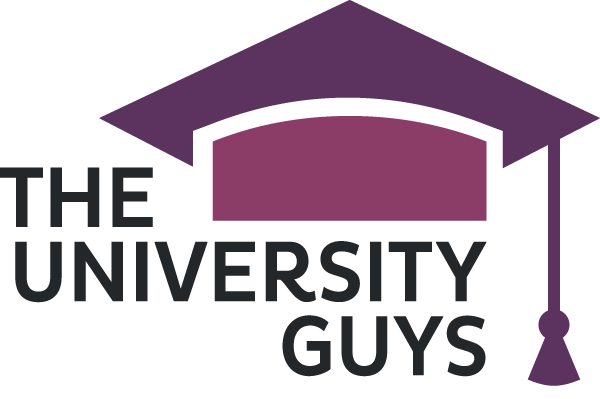Your Essential Guide: 2026 US Admissions Timeline for Students
Navigating the US university application process can feel like a marathon, not a sprint. Tick off each item as you complete it and track your progress!
Section 1: Early Planning & Research: Year 10 and Year 11
Research US Universities: Explore different types (liberal arts, large research, public/private), academic programs, locations, and campus cultures.
Initial Financial Aid Research: Understand which universities offer financial aid to international students and their policies. Use Net Price Calculators.
Familiarise with Standardised Tests: Learn about the SAT and ACT. Decide which test (if any) you plan to take.
Start Thinking About Extracurriculars: Reflect on your current activities. Are there any leadership roles or new projects you can pursue to demonstrate depth and impact?
Discuss with School Counsellor/Form Tutor: Inform them of your interest in US universities. Understand how your school supports US applications (e.g., transcripts, recommendations).
Create a Spreadsheet/Tracker: List potential universities, key deadlines, and required components for each.
Section 2: Testing & Building Your Profile
Register for SAT/ACT: Aim for your first test sitting.
Begin Test Preparation: Utilise resources like Khan Academy (for SAT), official practice tests, and consider a tutor if needed.
Continue Extracurricular Engagement: Deepen your involvement in activities you’re passionate about. Pursue leadership roles or significant projects.
Refine University List: Based on test scores (if received), academic interests, and financial aid considerations.
Consider Subject-Specific Preparation: For specific competitive programs (e.g., STEM), research any recommended pre-requisite courses or knowledge.
Section 3: Application Components & Refinement
Take Second SAT/ACT (if desired): Improve scores or try the alternative test.
Start Brainstorming Personal Essay Topics: Think about experiences, values, and insights you want to share.
Identify Potential Recommenders: Think about teachers (from core subjects like English, Maths, Science, or those who know you well) and your school counsellor/form tutor.
Prepare for UK Predicted Grades: Work with your teachers to ensure accurate predicted A-Level (or equivalent) grades are submitted.
Visit University Websites (Virtually): Attend online info sessions, virtual tours, and webinars.
Begin Drafting Personal Essay: Get an early start on the Common App/Coalition Application main essay.
Finalise Standardised Testing: Aim to have your best scores by August.
Request Letters of Recommendation: Formally ask teachers and your counsellor/form tutor, providing them with a “brag sheet” or detailed information about your aspirations and achievements. Give them ample time (at least 4-6 weeks).
Start Working on Supplemental Essays: As soon as university-specific prompts are released (often August/September), begin tailoring your responses.
Begin Common/Coalition Application: Set up your accounts and start filling in biographical information, academic history, and extracurriculars.
Gather Academic Transcripts/School Profile: Work with your school to ensure they can provide official transcripts and a school profile for US universities.
Section 4: Application Submission & Follow-Up
Finalise University List: Solidify your “reach,” “match,” and “safety” schools.
Review All Application Components: Proofread all essays (personal and supplemental) meticulously. Ensure all sections of the Common/Coalition App are complete.
Confirm Recommendations Submitted: Check with your recommenders and the application portals that letters have been sent.
Submit Early Action (EA) / Early Decision (ED) Applications: If applying ED (binding) or EA (non-binding), ensure these are submitted by their respective deadlines (often early/mid-October or November 1st).
Submit Financial Aid Applications (if applicable): If requiring need-based aid, complete CSS Profile (for many private universities) or university-specific forms.
Send Official Test Scores: Arrange for SAT/ACT scores to be sent directly from the testing agency to your chosen universities.
Submit Regular Decision Applications: Ensure all applications are submitted by their deadlines (often January 1st or later).
Attend Interviews (if offered): Prepare for and participate in alumni or admissions officer interviews.
Monitor Application Portals: Regularly check your university application portals for missing items or updates.
Send Mid-Year School Reports: Your school will likely send updated transcripts after first-term grades are available.
Section 5: Decisions & Next Steps
Receive Early Decision/Early Action Results: If accepted ED, withdraw other applications.
Continue to Monitor Portals: Await Regular Decision notifications.
Update Universities (if significant achievements occur): If you win a major award or have a significant new achievement, you can send an update.
Compare Financial Aid Offers: If accepted to multiple universities, carefully review aid packages.
Receive Regular Decision Results: Most decisions arrive by late March/early April.
Make Your Final Decision (by May 1st – National College Decision Day): Inform the university you plan to attend and decline offers from others.
Confirm Enrollment & Pay Deposit: Secure your place.
Begin Visa Application Process: Once accepted and enrolled, start the F-1 student visa application (DS-160 form, SEVIS fee, interview scheduling).
Final Transcripts Sent: Your school will send final A-Level (or equivalent) transcripts.
Complete Visa Interview: Attend your visa interview at the US Embassy/Consulate.
Pre-Departure Preparations: Book flights, arrange accommodation, attend orientation, pack!
Connect with University Resources: Engage with international student office, academic advisors, and student groups.
Disclaimer: This timeline is a general guide. Specific deadlines vary by university. Always verify dates and requirements on individual university websites.







